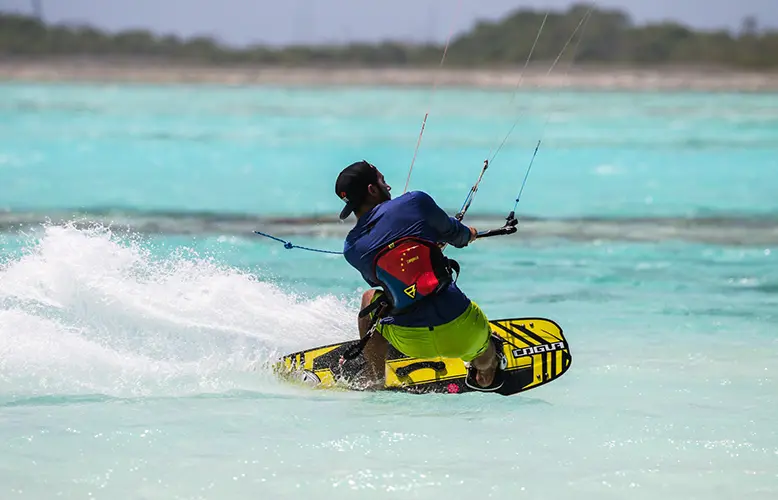
Wakeboarding and wakesurfing are two popular water sports that involve riding a board on the wake behind a boat. While they may seem similar at first glance, there are significant differences between the two that can impact a rider’s experience and preference. In this guide, we will explore the differences between wakeboarding and wakesurfing to help you choose your ride.
Understanding Wakeboarding and Wakesurfing
History and Evolution
Wakeboarding and wakesurfing are two popular water sports that have evolved from each other. Wakeboarding is a relatively new sport that was developed in the late 1980s by blending water skiing, snowboarding, and surfing. Wakesurfing, on the other hand, is a much older sport that dates back to the 1960s when surfers in California started riding the wakes behind boats for fun.
Over the years, wakeboarding has become more popular than wakesurfing, thanks to the development of specialized boats and equipment. However, wakesurfing has also gained a lot of popularity in recent years, especially among surfers who want to experience the thrill of surfing on a stationary wave.
Key Differences
The main difference between wakeboarding and wakesurfing is the way the rider is towed. In wakeboarding, the rider is towed behind a boat at high speeds, usually between 20 to 25 mph. The rider uses a board with bindings to perform various tricks and jumps on the wake created by the boat.
In wakesurfing, the rider is towed behind a boat at a much slower speed, usually between 10 to 14 mph. The rider uses a board without bindings and surfs directly on the wake created by the boat. Wakesurfing is often compared to surfing, as the rider can perform similar maneuvers such as carving and riding the wave.
Similarities and Overlaps
Despite the differences, wakeboarding and wakesurfing share some similarities. Both sports require a boat with a specialized wakeboard tower and ballast system to create a large wake for the rider to ride on. They also require similar safety equipment such as life jackets and tow ropes.
Moreover, some riders enjoy both sports and may switch between wakeboarding and wakesurfing depending on their mood and the conditions. Some riders even combine the two sports by using a wakesurf board to perform wakeboarding tricks on the boat’s wake.
Equipment and Gear
Boards and Their Characteristics
Choosing the right board is crucial when it comes to wakeboarding or wakesurfing. Wakeboards are typically shorter and wider than wakesurf boards, making them more stable and easier to control. On the other hand, wakesurf boards are longer and narrower, allowing riders to carve and maneuver more easily.
When choosing between the different styles of boards, consider your skill level, riding style, and personal preferences. Some boards are designed for beginners, while others are geared towards advanced riders. Additionally, some boards are better suited for jumping and tricks, while others are built for cruising and carving.
Bindings and Boots
Bindings and boots are essential for keeping your feet securely on the board while riding. Wakeboard bindings are typically closed-toe and offer more support and control, while wakesurf bindings are open-toe and provide more flexibility and freedom of movement.
When selecting bindings, consider your shoe size, riding style, and comfort preferences. Some bindings are designed for a tighter, more secure fit, while others are more relaxed and comfortable.
Ropes and Handles
A strong, durable rope and handle are essential for wakeboarding and wakesurfing. Wakeboarding ropes are typically thicker and heavier, while wakesurf ropes are thinner and lighter. Additionally, wakesurf handles are often shorter and more compact than wakeboarding handles.
When selecting a rope and handle, consider the length, material, and grip. Look for a rope that is strong and durable, with a comfortable handle that provides a secure grip.
Safety Equipment
Safety should always be a top priority when wakeboarding or wakesurfing. A properly fitting life jacket is essential for staying safe on the water, as it can help keep you afloat and protect you from injury in the event of a fall.
When selecting a life jacket, look for one that is Coast Guard approved and fits snugly but comfortably. Additionally, consider other safety gear such as helmets and impact vests, especially if you are a beginner or planning to attempt more advanced tricks.

Techniques and Skills
Basic Stance and Balance
Whether you are wakeboarding or wakesurfing, having a solid stance and balance is crucial. For wakeboarding, a rider should keep their knees slightly bent, weight centered over the board, and arms straight. Wakesurfing requires a more relaxed stance with the knees slightly bent and weight shifted towards the back foot. It’s important to keep your eyes on the boat and focus on maintaining a steady balance to avoid falling.
Tricks and Maneuvers
Both wakeboarding and wakesurfing offer a variety of tricks and maneuvers for riders to master. Wakeboarders can perform jumps, turns, spins, and flips while being towed behind the boat. Wakesurfers can also perform turns and spins, but they also have the added option of riding the wave without the rope. Popular wakesurfing tricks include carves, shuvits, and 360s.
Carving and Aerial Tricks
Carving is an essential skill for both wakeboarding and wakesurfing. It involves using the board’s edges to make smooth turns while maintaining speed. Wakeboarders can also perform aerial tricks such as grabs, spins, and flips. Wakesurfers can perform aerial tricks as well, but they typically involve jumping off the wave and performing a maneuver before landing back on the board.
The Ride Experience
When it comes to wakeboarding and wakesurfing, the ride experience is what it’s all about. Both sports offer a unique and thrilling ride, but there are some differences to consider.
Speed and Momentum
Wakeboarding typically involves faster speeds and more momentum than wakesurfing. Riders are towed behind the boat at speeds ranging from 18-24 mph, which allows them to perform high-flying tricks and jumps. On the other hand, wakesurfing requires a slower speed of around 10-12 mph, which creates a larger wake for the rider to surf on.
Wave and Wake Dynamics
The type of wave and wake created by the boat is another factor to consider. Wakeboarding requires a clean and crisp wake that is narrow and tall, allowing the rider to perform tricks and jumps. Wakesurfing, on the other hand, requires a larger and longer wave that is ideal for carving and riding.
Falls and Recovery
Falling is an inevitable part of both wakeboarding and wakesurfing, but the way in which the rider falls and recovers differs between the two sports. In wakeboarding, falls often result in the rider getting air and landing hard on the water. Recovery involves quickly getting back up on the board and being towed back to the boat. In wakesurfing, falls are typically less dramatic and involve simply slipping off the board. Recovery involves swimming back to the boat and climbing back on the board.
Choosing the Right Boat
When it comes to wakeboarding and wakesurfing, choosing the right boat is crucial. The boat you choose can greatly affect your experience on the water. Here are some factors to consider when selecting the perfect boat for your needs.
Boat Types and Features
There are several types of boats to choose from, each with their own unique features. Inboard boats are the most popular choice for wakeboarding and wakesurfing because they have a propeller located beneath the boat, which creates a larger wake. Outboard boats have a motor on the back of the boat, which can limit the size of the wake. V-drive boats have the engine located in the back of the boat, which allows for a larger wake and more space in the boat. Jet boats use water jets to propel the boat, which can create a smaller wake but are great for maneuverability.
Another important feature to consider is the tower. A tower is a metal frame that extends above the boat and is used to attach ropes and cables for wakeboarding and wakesurfing. A wake tower is a tower specifically designed for wakeboarding and wakesurfing, and can greatly improve your experience on the water.
Wake Shape and Size
The shape and size of the wake is also an important factor to consider when choosing a boat. The wake is the wave created by the boat, which is what wakeboarders and wakesurfers ride on. The size and shape of the wake can greatly affect your experience on the water.
For wakeboarding, a boat with a larger wake is ideal. The wake should be steep and have a lot of pop, which allows for more air time and tricks. For wakesurfing, a boat with a smaller wake is ideal. The wake should be long and have a smooth transition, which allows for a more enjoyable ride.
Learning and Progression
Learning how to wakeboard or wakesurf can be challenging at first, but with practice and patience, anyone can become proficient in these sports. The learning curve for wakeboarding is generally steeper than that of wakesurfing, but both sports require a certain level of skill to perform well.
Starting Out as a Beginner
For beginners, it is important to start with the basics and focus on proper technique. This includes learning how to properly stand on the board, how to hold the rope, and how to get up out of the water. It is recommended to start with a shorter rope length and slower boat speed to help build confidence and control.
When starting out, it is also important to wear the proper safety equipment, such as a life vest and helmet. Additionally, it can be helpful to take lessons from a qualified instructor to learn proper technique and safety guidelines.
Developing Advanced Skills
As beginners progress and become more comfortable on the board, they can start to develop more advanced skills. This includes learning how to carve and edge the board, perform jumps and tricks, and navigate through the wake.
To develop these skills, it is important to continue practicing and pushing oneself to try new things. It can also be helpful to watch instructional videos or receive coaching from experienced riders.
Practice and Patience
Both wakeboarding and wakesurfing require practice and patience to master. It is important to not get discouraged if progress seems slow at first, and to focus on small improvements over time. Practicing consistently and regularly can help build muscle memory and improve overall skill level.
Some tips for practicing effectively include setting specific goals, varying the types of tricks and maneuvers practiced, and taking breaks when feeling fatigued or frustrated.
Safety and Precautions
Injury Prevention
Wakeboarding and wakesurfing can be thrilling, but they also come with a risk of injury. To minimize the risk of injury, it’s important to follow some basic safety guidelines. First and foremost, always wear a properly fitting life jacket. This will keep you afloat and protect you from injury in case of a fall.
It’s also important to stay aware of your surroundings. Make sure you know where other boats and obstacles are in the water, and avoid areas where there are lots of swimmers or other watercraft.
When learning new tricks or techniques, it’s best to start slow and gradually work up to more difficult maneuvers. This will help you build your skills and confidence without putting yourself at unnecessary risk.
Understanding Water Conditions
Water conditions can play a big role in the safety of wakeboarding and wakesurfing. Always check the weather forecast and water conditions before heading out on the water. High winds or choppy water can make it difficult to control your board and increase the risk of injury.
It’s also important to be aware of the depth of the water you are in. Shallow water can be dangerous, especially if you fall and hit the bottom. Make sure you know the depth of the water you are in and avoid areas where the water is too shallow.
Finally, be aware of the propeller on your boat. Never swim or ride too close to the back of the boat, and always turn off the engine when someone is in the water.
By following these basic safety guidelines, you can minimize the risk of injury while enjoying the thrill of wakeboarding or wakesurfing.
Final Words on Wakesurfing vs Wakeboarding
In the end, whether you choose wakeboarding or wakesurfing, it all comes down to personal preference. Both activities offer their own unique benefits and challenges.
For those seeking freedom and a laid-back style, wakesurfing may be the way to go. It offers a more relaxed experience and allows riders to be closer to the boat, making communication easier. Plus, the lack of bindings can make it easier for riders to switch positions and move around on the board.
On the other hand, wakeboarding may be a better choice for those looking for a more physical challenge and a chance to show off their style. The bindings provide a secure fit and allow for more control over the board, enabling riders to perform more advanced tricks and jumps.
Regardless of which activity is chosen, both wakeboarding and wakesurfing offer great opportunities for fitness and physical ability. Both require core strength and balance, making them great workouts for the entire body.
Ultimately, the choice between wakeboarding and wakesurfing comes down to personal preference and what each individual is looking to get out of the experience. By considering the factors discussed in this guide, riders can make an informed decision and choose the ride that is right for them.





